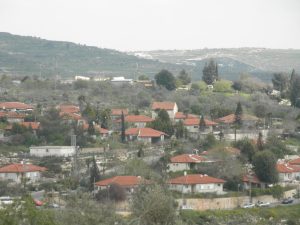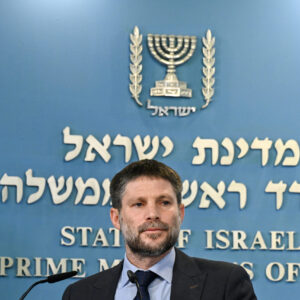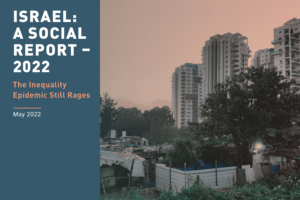The report presents the latest figures available on central government financing of local authorities. The report shows that Non-Haredi Settlements continue to benefit from the largest government subsidies
The report presents the latest figures available on central government financing of local authorities and offers comparisons between four different types of localities: the “Forum of 15” affluent local authorities, Jewish development towns, Arab localities, and settlements in the occupied territories. In addition, the report differentiates between Haredi settlements (Betar Illit, Modi’in Illit and Emanuel) and the rest of the settlements, which are not Haredi.
Bottom Line:
In 2017, the majority of the settlements (the non-Haredi ones) continued to expend the largest amount per capita: on average, NIS 8,548. They also received the largest designated subsidy from the central government (mainly for education and social welfare) – NIS 3,623 per capita, the largest balance grant – NIS 1,071 per capita and the largest amount in other grants – NIS 459 per capita.
Although there have been changes in government subsidies to local authorities over the past 20 years, still, throughout that period, the largest amounts were channeled to non-Haredi settlements.
The size of the subsidies determines the quality of the services received by residents. The surplus financing of non-Haredi settlements reflects a clear government preference as well as the influence of a strong lobby in the legislature.”
Central Government Subsidies to Local Authorities – Explanation
- Israel’s central government helps to finance a large part of the services provided by local authorities to their residents. In bureaucratic terms, this assistance is referred to as “designated income,” as this subsidy is intended for specific local expenditures, like education, welfare, health and cultural services.
- In addition, the central government extends special assistance to local authorities with few independent sources of income, mainly through what are referred to as “balance grants.”
- Government subsidies are especially important for local authorities with limited resources of their own: while affluent local authorities can finance most services from independent sources of income, this is impossible in local authorities that are devoid of independent income.
A. The per capita expenditure increased in all localities except the Haredi settlements.
1. Between 1997 and 2017, the per capita expenditure grew in all localities, except for the Haredi settlements, in which they decreased by about 4%.
2. In 2017, the highest per capita expenditure among different types of localities was in non-Haredi settlements – NIS 8,548. Not far behind was the group of affluent localities in Israel, with NIS 8,291 per capita. Next were the Jewish development towns, with NIS 7,496. And far behind, the Arab localities, with NIS 5,888. The lowest expenditure per capita was found for Haredi settlements – NIS 4,037.
3. The decrease in per capita expenditure in the Haredi settlements may be explained, in part, by population growth, from 21,000 in 1997 to 128,000 in 2017.
4. During the same period, the greatest increase in per capita expenditure – 45% — occurred in Arab localities. The most significant increase (29%) was in the decade between 1997 and 2007, the years during which a 5-year plan to promote Arab education, referred to as “The 4 Billion Plan,” was implemented.
B. The Lowest Increase in Central Government Subsidy – for Jewish Development Towns
1. In 1997, the central government designated subsidy for non-Haredi settlements – NIS 2,123 per capita – was much higher than that for Haredi settlements – NIS 781 per capita.
2. Two decades later, in 2017, the distinction between Haredi settlements, whose population increased much faster than that of all the other types of localities, and non-Haredi settlements, reveals that the highest designated subsidy per capita still went to the non-Haredi settlements – NIS 3,623, compared to NIS 1,723 in Haredi settlements.
3. In 2017, the designated subsidy in Arab localities was higher than that in Jewish development towns – NIS 3,054, compared with NIS 2,326. The designated subsidy for affluent localities was lower – NIS 2,093 per capita.
4. Between 1997 and 2017, the per capita designated subsidy for Arab localities grew by 133%; that of the Haredi settlements by 121%, that of the non-Haredi settlements by 71% and that of the affluent localities by 66 %. The lowest increase was found for Jewish development towns – only 31 %.
5. The fact that the highest central government designated subsidy in the past as well as in the present went to non-Haredi settlements, helps them to benefit from a budget that is even higher than that of the affluent localities within the Green Line.
6. It is noteworthy that the continued increase in designated subsidies to Arab localities is due to 5-year plans, an increase that comes after years of discrimination and neglect. Still, a report published by Sikkuy in 2005 showed that only 70% of the then allocated sum was actually spent.
C. The central government budget for balance and other grants just returned to its level of two decades ago. The main beneficiaries: non-Haredi settlements and Arab localities.
1. During the financial crisis that followed the second intifadah, the government made steep budget cuts that also affected balance and other types of grants.
2. In 1997, the central government budget for grants to local authorities was NIS 5.33 billion, and in 2000, on the eve of the intifadah, about NIS 6 billion. Following consecutive budget cuts, the budget reached its lowest point in 2014 – NIS 3.85 billion. In 2018, for the first time in two decades, the budget returned to its 2000 level – NIS 6 billion (2018 prices).
3. In 1997, the balance grants to Haredi settlements were similar to those to non-Haredi settlements; however, two decades later the per capita grants to non-Haredi settlements amounted to NIS 1,071, 42% more than that of Haredi settlements – NIS 756.
4. The balance grants going to Jewish development towns in 1997 were similar to those going to Arab localities. In contrast, in 2017 the grants that went to Arab localities amounted to NIS 1,049 per capita, higher by 47% than those that went to Jewish development towns, NIS 715 per capita.
// This publication was produced with the financial support of the European Union and and the Fund for Middle East Peace. Its contents are the sole responsibility of the Adva Center and do not necessarily reflect the views of the European Union or the FMEP.





